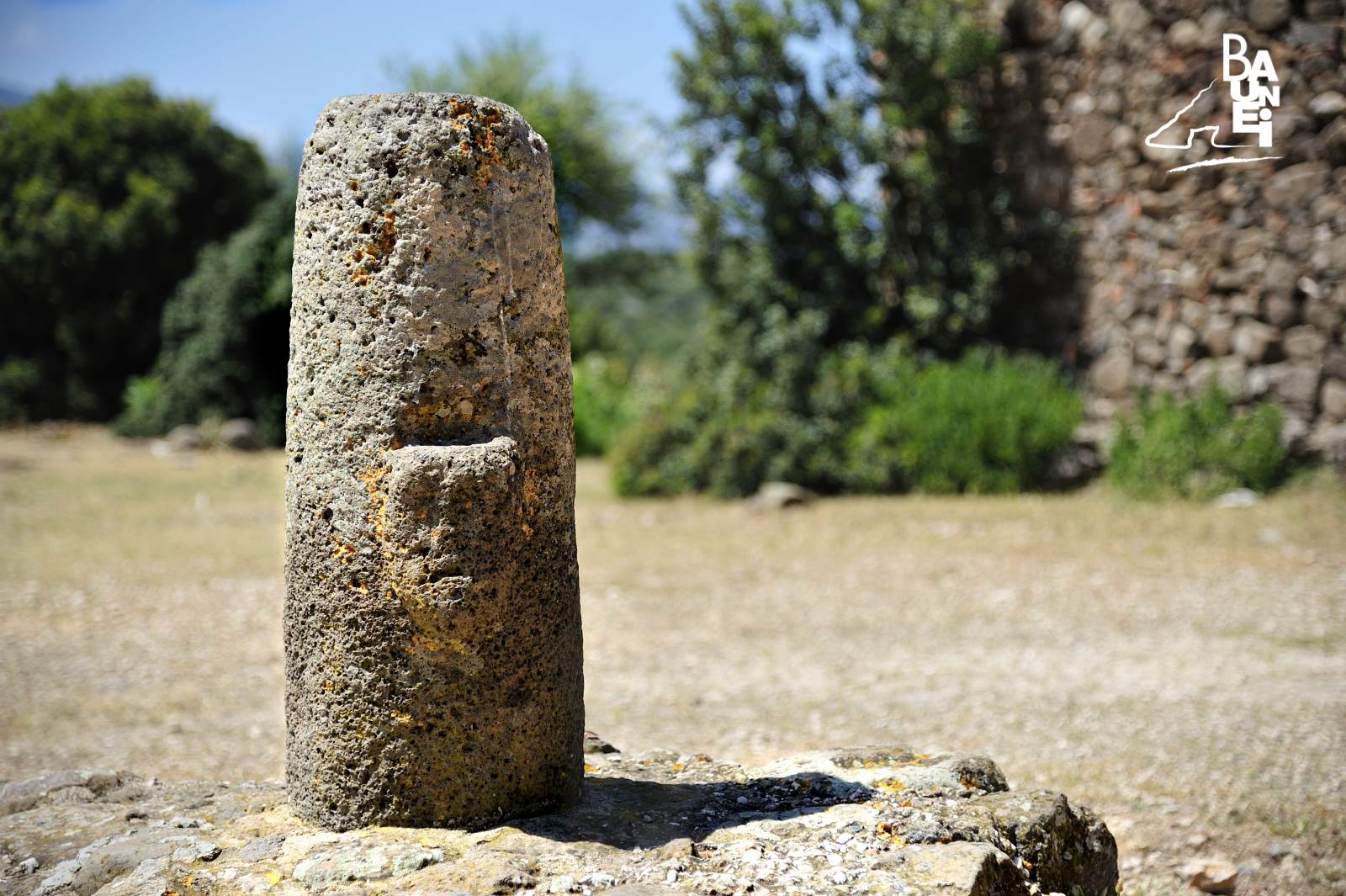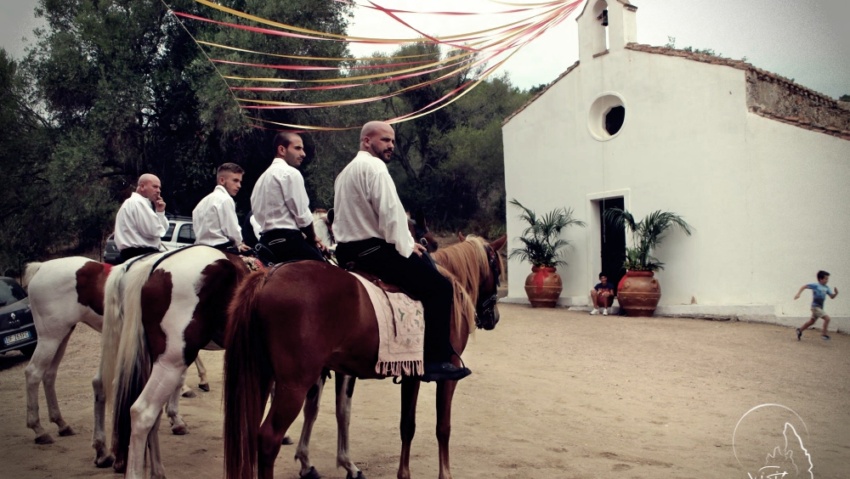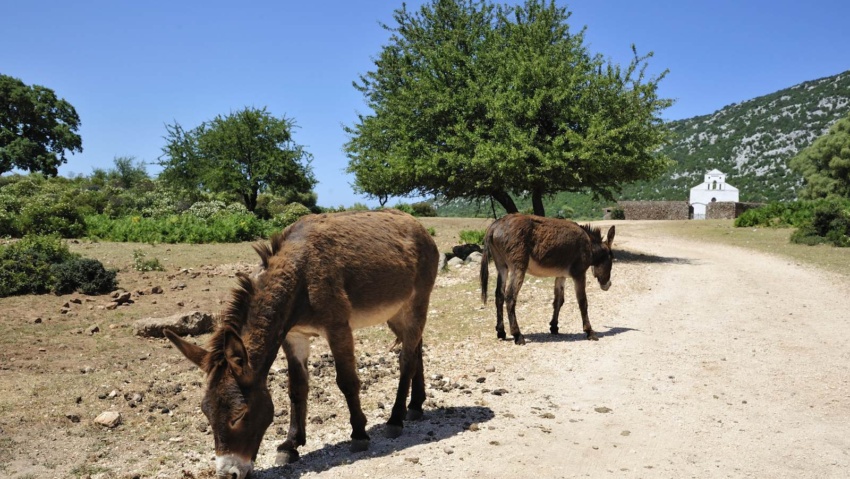The “Anthropomorphic Bethel”
Il The “Golgo Bethel” is located in the square in front of the church of St. Peter and is one of the most famous monuments in the territory of Baunei from the Nuragic era. This fascinating artefact, made of basaltic stone (also known as “the Menhir of Golgo”), is mentioned in all Sardinian texts on archaeology due to a human face carved in relief which makes it an interesting case of “anthropomorphic bethel”. Archaeologists use the term “bethel” to refer to stylised stone statues from the Nuragic era. The oldest bethels are usually cone shaped and sometimes have elements of anthropomorphism. Since human features in bethels are usually obtained via circular grooves, seen as open eyes, the clearly defined features of the embossed face of the “Golgo Bethel” make it one of the most significant artefacts of Nuragic art. In the mid-seventies, the unique bethel attracted the attention of the archaeologist Giovanni Lilliu, who came to Baunei on purpose to study “the interesting little monument with the figure”. The results of his research were published in 1975 in the journal “Sardinian Studies”, in an article entitled “From the aniconic bethel to the statuary Nuragic” in which the anthropomorphism of the “little monument” is described as follows: “The face, protruding 4 to 5 cm, is oval in shape, smooth, a bit long in the chin, with soft, simple features; it is 19 cm long and 12 cm wide at the front (…). Overall, it is an aloof face, impassive, in the full frontal position as required by geometric and symmetrical abstraction: a truly stone face”.
Scholars assume that the “Golgo Bethel” was originally situated at the side of one of the numerous “Tombs of the Giants” (funerary monuments of the Nuragic era), which despite being scattered throughout the plateau, are difficult to see, unless accompanied by expert guides, because they are often hidden by the dense vegetation. The funerary tombs are called the “Tombs of the Giants” due to their characteristic enormous size. They are stone tombs, consisting of a long covered corridor (the funerary chamber itself) preceded by a semi-circular exedra, at the centre of which is a small door. According to antique funerary art experts, bethels such as the Golgo Bethel were placed near collective tombs and had a precise ritual function: they had to vigil over the safety of the tomb and the peace of the deceased who were buried therein.
CONTATTI
Via San Nicolò, 2 – 08040 BAUNEI (Sardinia, Italy)
infopoint@turismobaunei.eu
+39 349 5462583





